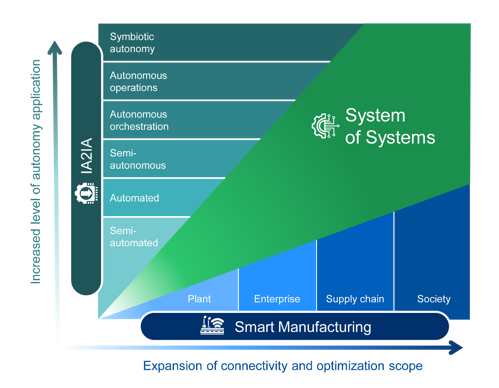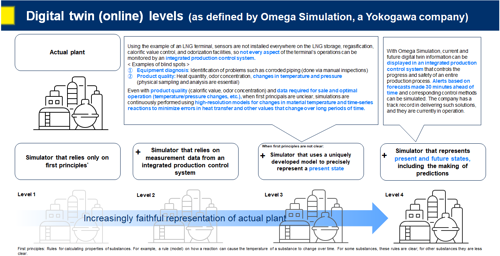Digital Exclusive: Automation and digital technologies' role in the energy transition-A discussion with Yokogawa
Hydrocarbon Processing (HP) sat down with Mitsuhiro Yamamoto (MY), Vice President and Executive Officer of the Systems Business Division, Digital Solutions Headquarters, Yokogawa Electric Corporation to discuss the global energy transition, and how digital technologies and automation have and will play a major role in the evolution of the processing industries.
HP: Can you provide a short background of your professional career, and your role with Yokogawa?
MY: I am currently the Vice President and Executive Officer and Head of the Systems Business Division, which is part of Yokogawa Digital Solutions. I began my career in product development, working as an engineer. In this role and subsequent ones, I gained domestic and international experience in providing plant automation, cybersecurity and other solutions for many clients.
In my current role, I am leading Yokogawa’s efforts to create value based on the company’s systems offerings, which include the CENTUM distributed control system and Collaborative Information Server (CI Server), as well as digital twins and other new technologies. Lastly, I am very active in Yokogawa’s Open Process Automation (OPA) initiative.
HP: The Port of Rotterdam Authority and Yokogawa have initiated a feasibility study into increasing cross-industry integration for the efficient use of energy and utilities in the Rotterdam industrial cluster to contribute to ambitious regional decarbonization goals. My understanding is that these types of projects require collaboration and detailed calculations based on simulation. What value will Yokogawa provide for this project?
MY: In short, we will achieve total optimization across industries and supply chains. We will connect and communicate with stakeholders and make the most of our operational technology (OT) knowledge and capabilities to propose and implement total optimization carbon dioxide (CO2) reduction measures from a neutral third-party standpoint.
- System of systems:For inter-industry collaboration, the operational data of each company or plant must be connected and integrated. By connecting the data, it is possible to devise and operate under measures to reduce CO2 However, it is highly important data, so we need to ensure security.
- Neutral third party:To realize inter-industry collaboration, the coordinator should be a neutral third party that is not an operator in the complex, and it will be expected to facilitate the creation of fair arrangements by proposing minimum CO2 emissions operation based on fair judgement.
- Our strengths:Yokogawa will provide comprehensive, actionable and concrete carbon-neutral solutions that will help to realize a sustainable society and strengthen the competitiveness of the entire industrial complex. This includes:
- Knowledge and experience in process control technology, a core competency of Yokogawa
- Knowledge of process engineering and consulting know-how (e.g., process improvement, energy efficiency improvement, cross-industry collaboration)
- Solution delivery capabilities created by the fusion of control process technology, process engineering and process installation (e.g., at oil refineries).
- We have recently announced an order to supply an integrated automation and energy control and monitoring system for an offshore green hydrogen production and storage pilot plant in Europe—owned by a JV between Shell and Eneco. Yokogawa’s CI Server will play an important role in this complex system.
- Realization of information technology (IT)/OT convergence by CI Server: CI Server is an integrated operations environment that covers the entire plant, or even multiple plants, through a wide range of connectivity with in-house and third-party distributed control systems (DCSs), programmable logic controllers (PLCs), equipment, and so on. This environment supports digital transformation into the OT domain by providing artificial intelligence (AI)-based data analysis, abnormality prediction and decision support for operators. It provides the following benefits:
- The ability to provide regional energy management solutions that enable optimal control according to supply and demand [energy supply facilities required by paired processes (e.g., heat and power)]
- Simulation technology to help implement optimal production plans
- Integrating information while ensuring security.
HP: Traditional energy is also important, but the world needs to pursue "More energy, less carbon." What role can Yokogawa and KBC play in this energy transition?
MY: We will also actively work on the development and utilization of new energy sources, such as renewable energy. Yokogawa believes that the knowledge and experience of process control technology and simulation technology cultivated in the traditional energy industry can also be applied to new energy.
The reality is that customers who have introduced our systems are themselves struggling with the transition to new energy. We will support this transition through a realistic and practical approach, while also promoting operational optimization and CO2 reduction measures for existing assets.
Our business structure is now based on industry. Our specialty is the energy industry, and we are working to grow our business in the renewable and new energy segment.
HP: Tokyo Gas’ LNG terminal has used Yokogawa’s digital twin for years to demonstrate current operations, and to predict future issues and opportunities, with results shown on Yokogawa’s DCS. What do you see as the future for these types of interactions between digital twins and DCSs?
MY: We advocate for industrial automation to industrial autonomy (IA2IA). For example, the future plant’s operations will be autonomous. This type of operation will lead to additional safety and efficiency. In addition, we believe that advances in digital twin technologies will promote autonomous operations, and as the knowledge and skills of personnel increases, so will the scope and advancement of autonomous operations.
Furthermore, I believe that digital twins can improve various areas of operations:
- Using digital twins to supplement information that cannot be measured in the physical plant: For example, there are various areas of the plant that do not contain sensors, so data is not collected. However, by utilizing a digital twin, personnel can supplement the data by creating soft sensors.
- The ability to generate future digital twin information/data: Here, we can prepare for possible future alarms in any given area, as well as the best way to react to such alarms. In addition, digital twins can provide “what if” scenarios—e.g., outcomes from opening/closing certain valves. From this analysis, the operator can choose the best outcome for various operations.
Another area to highlight is expanding the scope of the digital twin to cover the entire plant. Due to processing units being interconnected, operational optimization using digital twins becomes mandatory, as many activities in one unit affect other units. Utilizing digital twins can enable operators to run various scenarios to find the optimal efficiency in plant operations, as well as the best options for energy efficiency and CO2 mitigation.
HP: Yokogawa is playing a leading role in the OPA (Open Process Automation) initiative. What is Yokogawa’s role in this initiative, and what benefits will this initiative deliver to process manufacturers?
MY: Yokogawa is the leading OPA system integrator and service provider. We have the capability to provide OPA systems for replacing existing DCSs, adding to existing DCSs and for new facilities. OPA systems developed by Yokogawa contain hardware and software from numerous suppliers and utilize Yokogawa software for key Open Process Automation Standard (O-PAS) aligned components, while providing an integrated system.
Our organization has developed an OPA supplier network that provides hardware and software technologies for use in Yokogawa OPA systems. To date, these suppliers include Schneider Electric, Phoenix Contact, R. Stahl, ASRock, Inductive Automation, Dell, VMware, and Red Hat.
There are several key benefits delivered by OPA technology. OPA aims to achieve the interoperability and portability of systems by standardizing communication methods and information models using standard specifications. It provides process manufacturers with further optimization of their plant operational management. This security is also a key benefit. OPA takes a “secure-by-design” approach, and OPA components need to support IEC 62443-4-2 security level 2 (SL-2) capabilities.
Moving forward, the O-PAS and the application of open technologies in process automation are still in their early stages. Yokogawa will support Open Process Automation Forum (OPAF) to evolve the O-PAS and build out the certification program, and to help the industry adopt OPA by participating in the OPAF and serving as an OPA system integrator, service provider and component supplier.
Yokogawa has developed hardware and software and good practices for building, configuring and installing OPA systems. When building a system, not all the OPA components required are available in the market today, so Yokogawa has developed new components that are needed as a system integrator.
In addition to OPA efforts, our system of systems (SoS) concept is a collection of independently operated and managed systems connected to form a larger system that delivers synergies and emergent value to all stakeholders in a plant, enterprise, supply chain or societal ecosystem (FIG. 1).

We promote connectivity and create value through overall optimization driven by integration, autonomy and digitalization, based on two approaches: IA2IA, which changes the level of autonomy, and smart manufacturing, which broadens the scope of overall optimization.







Comments